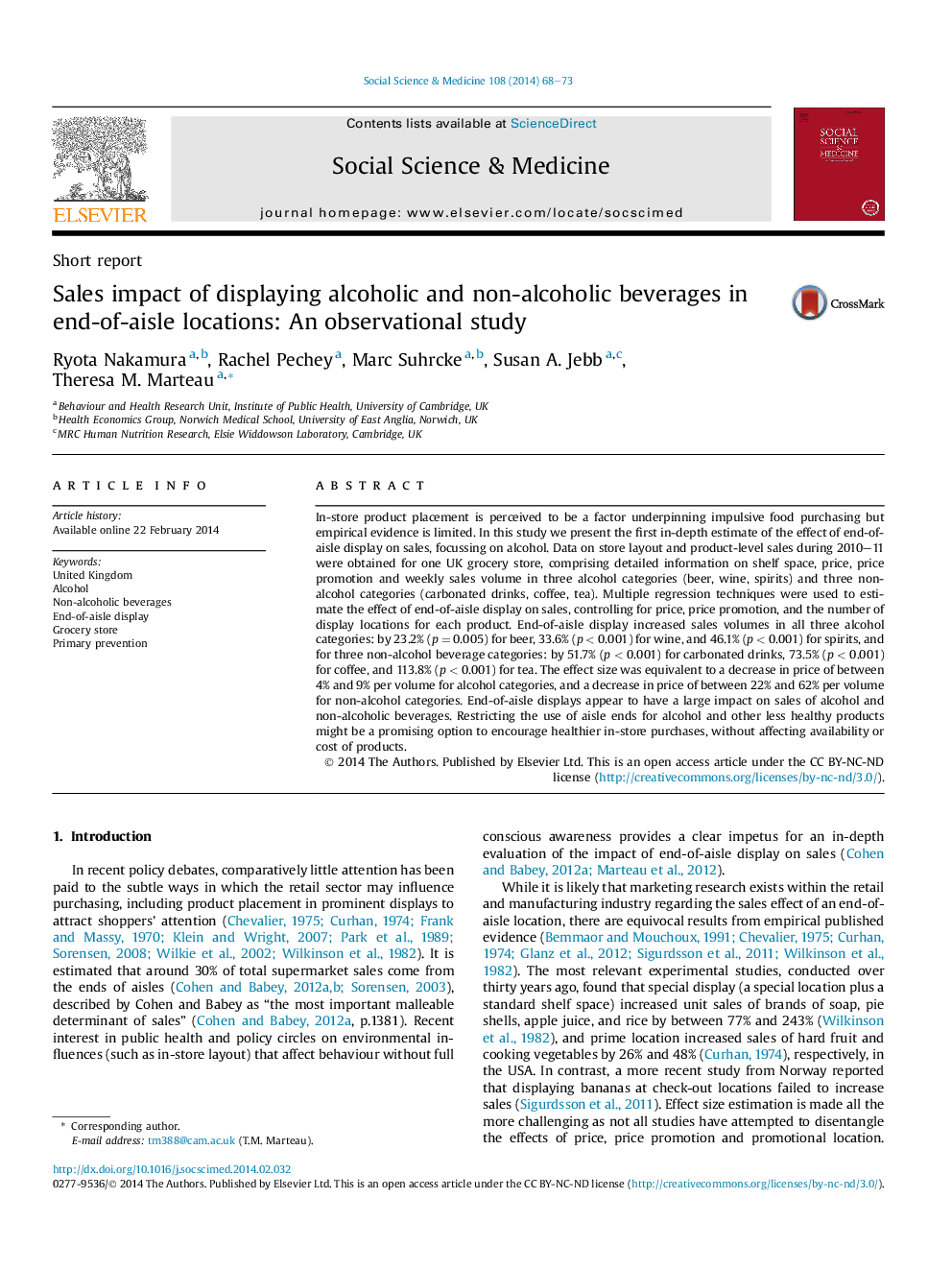| Article ID | Journal | Published Year | Pages | File Type |
|---|---|---|---|---|
| 7335399 | Social Science & Medicine | 2014 | 6 Pages |
Abstract
In-store product placement is perceived to be a factor underpinning impulsive food purchasing but empirical evidence is limited. In this study we present the first in-depth estimate of the effect of end-of-aisle display on sales, focussing on alcohol. Data on store layout and product-level sales during 2010-11 were obtained for one UK grocery store, comprising detailed information on shelf space, price, price promotion and weekly sales volume in three alcohol categories (beer, wine, spirits) and three non-alcohol categories (carbonated drinks, coffee, tea). Multiple regression techniques were used to estimate the effect of end-of-aisle display on sales, controlling for price, price promotion, and the number of display locations for each product. End-of-aisle display increased sales volumes in all three alcohol categories: by 23.2% (p = 0.005) for beer, 33.6% (p < 0.001) for wine, and 46.1% (p < 0.001) for spirits, and for three non-alcohol beverage categories: by 51.7% (p < 0.001) for carbonated drinks, 73.5% (p < 0.001) for coffee, and 113.8% (p < 0.001) for tea. The effect size was equivalent to a decrease in price of between 4% and 9% per volume for alcohol categories, and a decrease in price of between 22% and 62% per volume for non-alcohol categories. End-of-aisle displays appear to have a large impact on sales of alcohol and non-alcoholic beverages. Restricting the use of aisle ends for alcohol and other less healthy products might be a promising option to encourage healthier in-store purchases, without affecting availability or cost of products.
Related Topics
Health Sciences
Medicine and Dentistry
Public Health and Health Policy
Authors
Ryota Nakamura, Rachel Pechey, Marc Suhrcke, Susan A. Jebb, Theresa M. Marteau,
